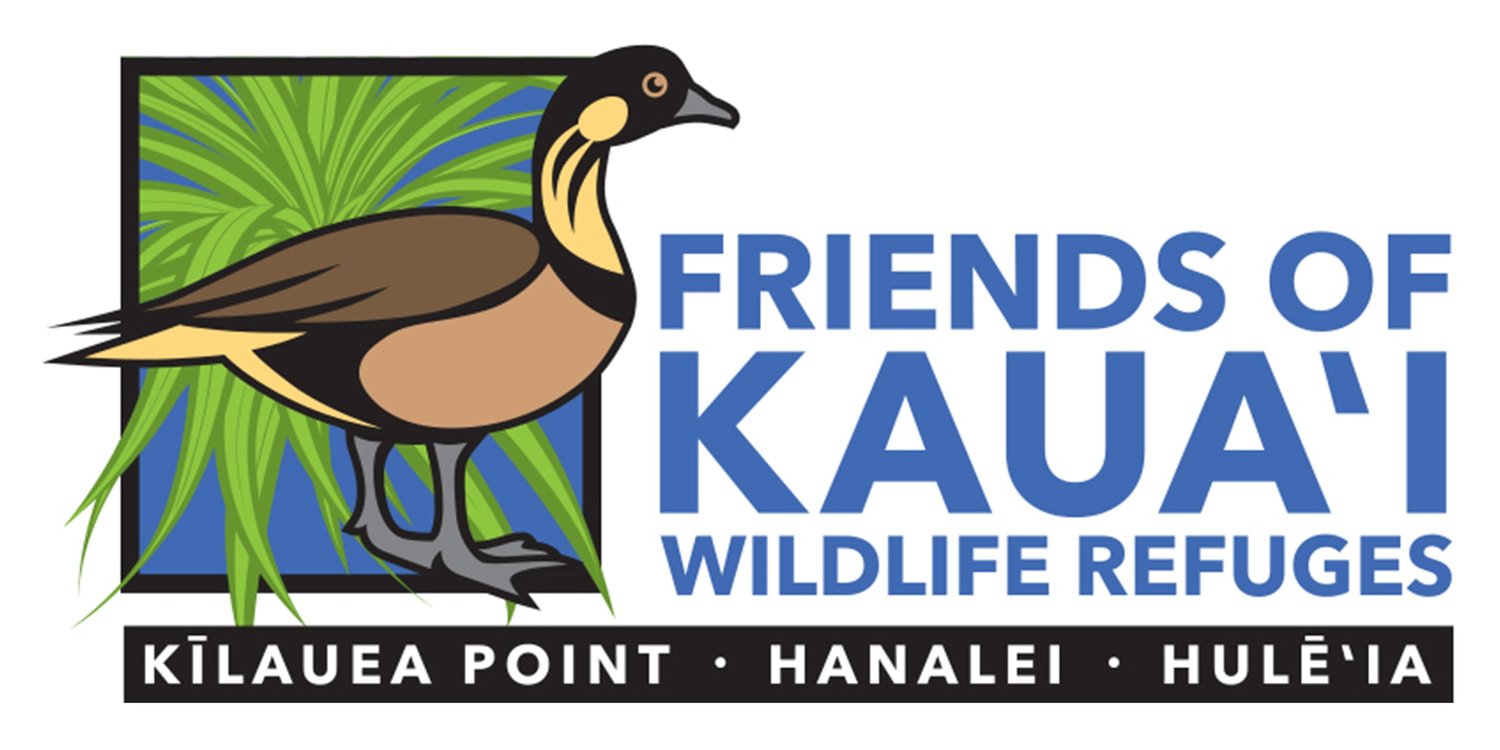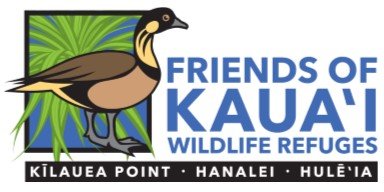Wildlife Spotlight: ae’o
The ae‘o, or Hawaiian stilt, is an endangered native Hawaiian waterbird. They are endemic to Hawaiʻi, which means that they are found nowhere else in the world, and it is our kuleana to help protect them. The latest state-wide survey reported a sharp decline in waterbird populations, including the ae‘o. It is now estimated that there are only 1,511 left in the world and Hanalei NWR is a critical strong-hold for these birds. Click HERE for more information about critical waterbird populations.
Aeʻo have very long pink legs and a long black bill and can grow up to 16 inches in length. In fact, those legs bring them the distinction of having the second largest body-to-leg ratio of any bird in the world, exceeded only by the flamingo.
Males have a black back and white forehead and are white below, females often have a tinge of brown on their backs and the chicks are well camouflaged with tan and black speckled down.
The immature birds produce a sharp peeping call, while the adults are known for a sharp “kip-kip-kip” call when disturbed on the ground or in flight. They also exhibit some very interesting behaviors. Aeʻo are very protective of their nests and will swoop at predators. The adults may also feign an injury or call out as if wounded and limp away from its eggs or young to cleverly lure potential predators away...a very cool adaptation!
Aeʻo tend to nest around low growing vegetation in fresh or brackish ponds, including the loʻi kalo and managed wetlands of Hanalei NWR. These “chatty” little birds are generally easy to spot and hear around our wetland habitats.
When foraging, aeʻo favor habit areas with shallow fresh water, such as marshes and ponds. They will walk across mudflats and shallow water, keeping their bodies above the waterline and dipping down to pick insects, worms, crabs, small fish and the seeds and roots of water plants from the mud.
Aeʻo were formerly quite common across the state. However, up until 1941, they were hunted for sport. Other major causes of their decline have been habitat destruction due to the drainage of marshes and wetlands, along with predation by introduced mammalian predators. Please help by preserving wetland habitats, installing and maintaining septic tanks, keeping cats indoors and dogs leashed, and driving slowly near grassy wetland areas.
Photo: Aeʻo foraging and soaring at Hanalei NWR, Credit: Hob Osterlund, Dan Zimmerman, USFWS.


